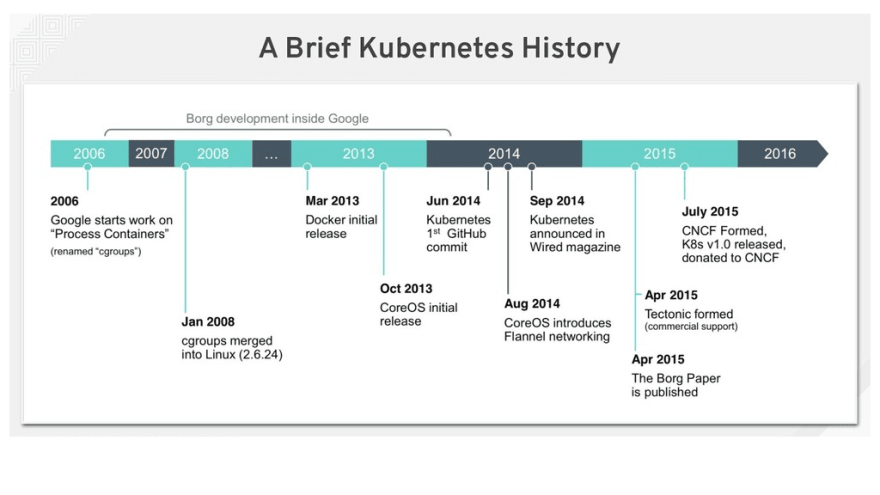A brief history of Containers
Containers have been around since the 1970s for creating an isolated environment where applications and services can run without interfering with other processes. Containers began as a Linux kernel process isolation construct encompassing cgroups (control groups). The release of Docker in 2013 popularised containers for the masses. Docker packages software into standardised units called containers with everything the software needs to run, including libraries, system tools, code, and runtime.
Origin of Kubernetes














